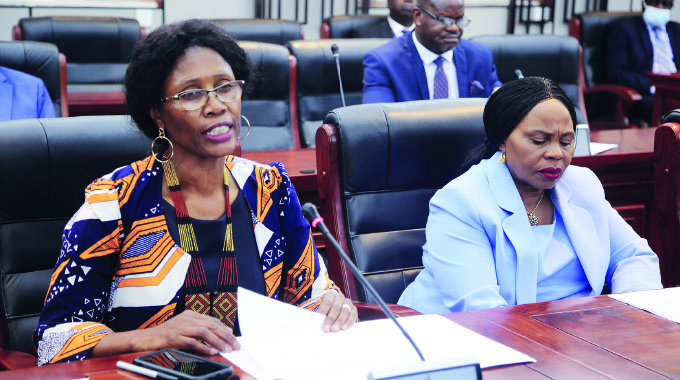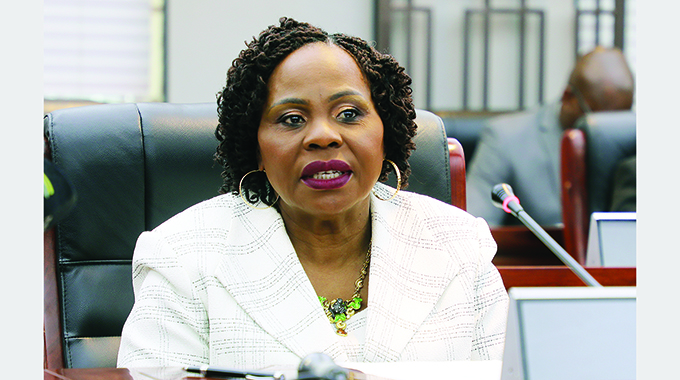Power supplies to normalise

Ivan Zhakata Herald Correspondent
POWER supplies are set to normalise from today after almost a week of exceptionally high-level load shedding caused by the breakdown of four generation units at Hwange Thermal Power Station and a far smaller challenge at Kariba South last weekend, Permanent Secretary for Energy and Power Development, Dr Gloria Magombo, said yesterday.
Two units at Hwange are now back on the grid, and another two units come back on grid today. Engineers have been working flat out on the units that went down to bring them back up.
Under normal supplies, there is still load shedding, but far less than the emergency shedding cycle that Zesa was forced to adopt last weekend, and the higher temperatures now being experienced will help as well by reducing demand for heating.
Making the week worse, the generation faults were matched by an unrelated grid fault for a few hours caused by a veld fire on Tuesday, when a fault on the main grid line linking Kariba and Harare resulted in the tripping of the rest of the grid, plunging the nation into a total outage which was however, quickly sorted out.
Speaking after yesterday’s Cabinet meeting, Dr Magombo, said: “The situation which we have had in the past week or so is that we had lost a number of units at Hwange which were due for service.
“These are occurrences which have been happening over the past couple of months due to the age of the equipment and we have also had a challenge or two in Kariba. We have managed to restore one of the units back in service. The situation was exaggerated on Tuesday when we had a system fault which took the whole system out which lasted for about four and half hours.”
Explaining the Tuesday fault, Dr Magombo said a bush fire on the main grid along the Alaska-Warren line Number 2 shut down that line and consequently a number of other lines were lost including those bringing in imports.
“We managed to restore all the 7 units in Kariba within four and half hours together with the imports and the independent power producers managed to come in.”
Dr Magombo said Units 3 and 4 in Hwange were now firing and feeding the grid.
“By end of day yesterday, we had two units in Hwange that were in service with about 245MW added to the grid. This still caused serious load shedding because the supply-demand gap was much higher than normal.
“We are working on another two units in Hwange, Unit 4 and Unit 2 which will be coming back by Friday (today). By tomorrow we will have at least four units in service in Hwange which will give us almost 400MW and this power shortage will ease and significantly improve the supply situation in the country.”
Thermal units, she said, took longer to bring up to full output even when repaired.
Government through the Ministry of Energy and Power Development has been working closely and monitoring the work which was being done by Zesa to ensure that the energy supply gap was closed.
“Through NDS1, one of the key issues which was identified on the existing infrastructure was the need to ensure that it is maintained and rehabilitated because of its age and also to build new capacity. It is also important to note that, through the same NDS1, we also identified the need to create an enabling environment for the private sector through independent power producers and the renewable energy policy,” Dr Magombo said.
She said Unit 7 at Hwange was above 95 percent complete and the commissioning of completed circuits has already started.
Dr Magombo said Unit 7 would be supplying a commercial load of 300MW into the system by November while Unit 8 will be completed by the end of the first quarter of next year.
It has already been announced that once these two very large units are generating, Zesa will be able to rehabilitate the older six Hwange units installed in the 1980s.
This will involve one being taken out of commission at a time and effectively rebuilt, with, for some units, this requiring large-scale component replacement in the coal feed, boiler, turbine, generator and transformer for each unit.
“We also have a number of MoUs which have been signed to develop Munyati Power Station. We have other framework agreements for the development of 500MW with Sky Power where we have a team which is currently looking at the modalities of the implementation of such projects.
“There will be phased implementation of 50 to 100MW. We have also facilitated, as the Government, access to funding by independent power producers which are mainly implementing solar projects,” Dr Magombo said.











Comments